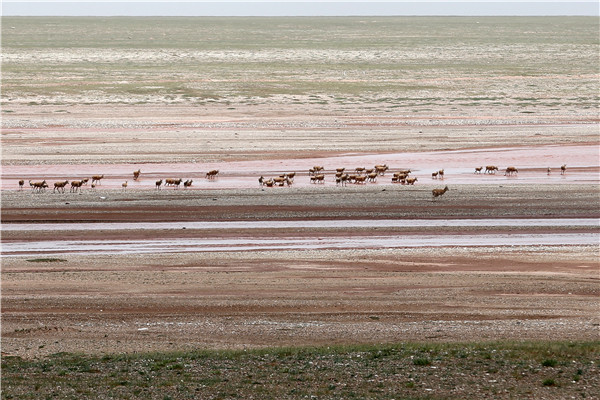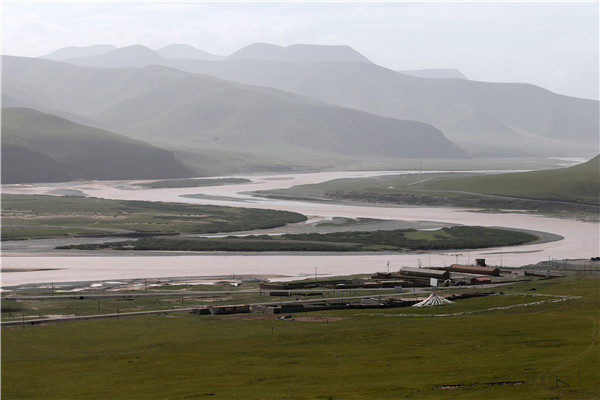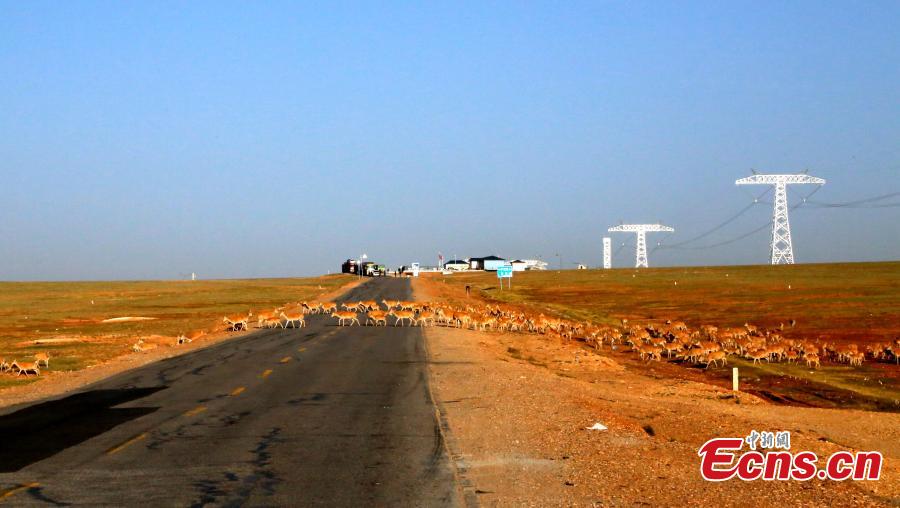Hoh Xil launches environment protection reform

The Tibetan antelope is the best-known endangered species in Hoh Xil. [Photo/China Daily]
The inclusion of Hoh Xil, which is on the world's largest and highest plateau, as a UNESCO World Heritage Site marks a new beginning for the area's conservation, says Buzhou, director of the Hoh Xil National Nature Reserve administration.
"We must improve our ideas and methods to meet the higher standards set by the World Heritage Convention," Buzhou says.
Hoh Xil, which is located on the Qinghai-Tibet Plateau in the northwestern part of Qinghai province, is famous for its natural beauty and biodiversity.
The nature reserve, comprising a core zone and buffer areas, covers 45,000 square kilometers and is situated more than 4,500 meters above sea level.
It's China's most biologically diverse nature reserve. As UNESCO notes, the geographical and climatic conditions have nurtured a unique mix of species. More than one-third of the plant varieties, and all the herbivorous mammals are endemic to the plateau.
Seven species are under national first-level protection. The Tibetan antelope is best-known and most representative of the endangered species.
Its numbers had plunged to fewer than 20,000 by the end of the 1990s due to poaching. However, thanks to years of protection efforts, the population has recovered to more than 60,000, the administration's statistics show.
Hoh Xil was listed as a provincial-level reserve in 1996. The next year, it was elevated to the national level, and a special organization was founded to protect it soon afterward.

The region hosts the sources of the Yangtze, the Yellow and the Lancang rivers. [Photo/China Daily]
The Hoh Xil nature reserve is included in a larger protected area that's the source of the three rivers (Sanjiangyuan)-the Yangtze, the Yellow and the Lancang. When the Sanjiangyuan National Nature Reserve was established in 2016 as China's first national park to pilot ecological-protection reform, the Hoh Xil administration became a subordinate organization affiliated with the national park's management bureau.
The administration, which has more than 80 staff members, now has five protection stations and a research station in different parts of Hoh Xil.
But Buzhou says the size of the area and the harsh climate present huge challenges for the administration, which is short of hands.
"It is very hard for anyone to carry out the wide range of tasks we have to do in such a harsh environment, let alone our staff, whose average age is 45 and more than a third of whom are not suitable for work at high altitudes due to health problems," he explains.
His organization is in desperate need of younger professional and technical personnel, he says.
Volunteers have been providing more manpower. More than 500 volunteers from various professions and different parts of the country have participated in protection and research over the years, Buzhou says.
Many nomads living along the edges of the reserve also participate in protection. In Zhiduo county, hundreds of local herdsmen have been recruited as grassland rangers to protect the part of Hoh Xil that is located in the county. More than 200 residents in Masai village, which has a population of 1,600, have become grassland rangers after a careful selection process.
"Our job is to stop poaching, and observe and record the wildlife that we see," says 52-year-old herdsman Songbao, who has been a ranger for five years.
The rangers are organized into groups, and they set out regularly on horses, yaks, motorbikes or cars, depending on geographic conditions.
Their work takes them into the wild for two to seven days at a time, depending on the distance. The rangers, who receive annual training, are paid 1,800 yuan ($260) a month.
Songbao says local residents' environmental awareness is being continually enhanced.
"Generations of us have lived on this land. We are willing to do the protection work, even if we don't get paid," he says.
Since Sanjiangyuan became a national park, the national and provincial governments have issued documents to guide the reform and integration of various local departments to streamline the management of the entire region, including Hoh Xil.
For example, in Zhiduo, several government departments engaged in environmental protection, such as the land and resources bureau and the water resources bureau, have been integrated into the same organization, supervised by Sanjiangyuan's management bureau.
The reform has been helpful because it has clarified the responsibilities of the different bureaus, says Cairen, deputy director of the new organization.
Your Comment
Name E-mailRelated News
-
;
-
-

-
Hol Xil: Ideal habitat for Tibetan animals
Hol Xil has an average altitude of over 4,600 meters, making it an ideal habitat for Tibetan antelopes, kiangs and other animals. It was enlisted as one of the UNESCO's World Natural Heritages in July 2017.
-
-
-

-
China's largest uninhabited area Hoh Xil to get internet
Starting from August 29, internet connection and cellphone signal will be available in Hoh Xil National Nature Reserve in Northwest China's Qinghai province.
-
-
-

-
Green light for Tibetan antelopes in Hoh Xil
Since Aug. 1, about 200 antelopes have crossed the Qinghai-Tibet road every day to return to their habitat.
-
Based in Lhasa, Tibet Vista is a Tibet travel agency that specialized in Tibet permit, and Tibet tours for both private and group travelers at a local price!
•4 Days Lhasa City Group Tour from USD 460 •8 Days Everest Base Camp Group Tour from USD 850 •15 Days Mt.Kailash Group Tour from USD 1780 •2016 Tibet Train Tours from Beijing, Shanghai, Chengdu, Xining,etc










